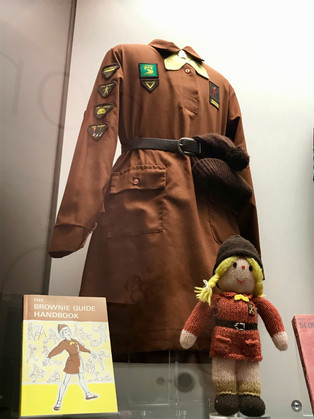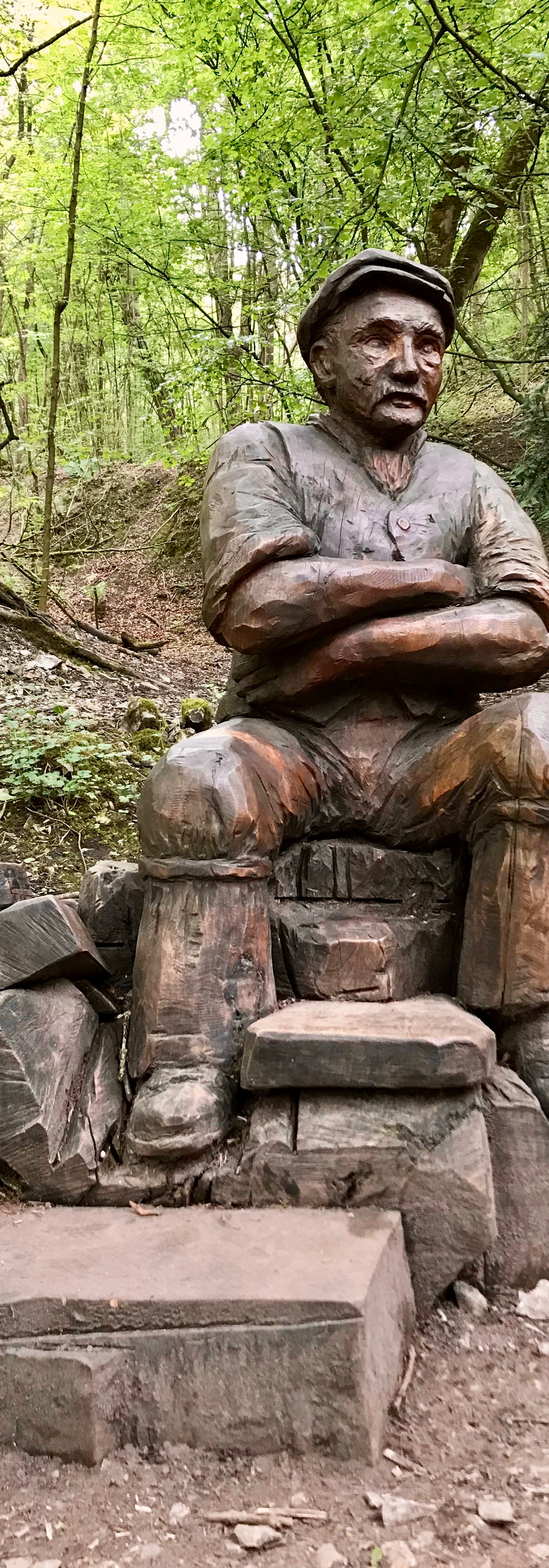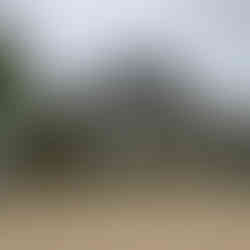I thought I would leave our French travel blog temporarily to tell you about our recent trip to Derbyshire because as always when you own a campervan no sooner are you home from one adventure than you want to be away on another. And sure enough a few days after our return from France a last minute decision led us up the A515 towards Buxton hoping that the very hot temperatures of the previous day, 35 degrees, would reduce a little and we could enjoy a few days exploring Derbyshire.
We stopped off for lunch at Sudbury Hall a NT property with a Museum of Childhood which was fun to walk around and discover that quite a few of the exhibits we had played with as children!
Next to the hall was Sudbury Courtyard a collection of historic estate buildings recently restored and now used for shops and a café, a lovely place to while away an hour. There were plaques around the yard telling its interesting history in its various guises.
Our destination, the campsite at Buxton, was a Caravan and Motorhome Club Site. It is set in an old quarry in a lovely location above Buxton in the Grin Low Country Park with walks from the site around the park down into Buxton via Solomon’s Temple and Poole’s Cavern.
Our first full day and the weather was definitely colder, windier and naturally as it was July, showery, so we decided to take the bikes and ride the Monsal Way. We don’t currently have a bike rack but Garry had managed to squeeze them into Hygge by removing the front wheels.
Views of The Monsal Trail from Monsal Head. (Click on the arrow to view)
We parked at Millers Dale Station, which has recently been opened as a café and was once the largest and busiest station on the line, with 5 platforms. Difficult to believe in its current guise this was once a very busy midland railway. It is now a wonderful 8.5 mile cycling and walking route between Blackwell Mill and Bakewell, with its recently restored tunnels, opened at a cost of over 3 million pounds, you can enjoy exploring the line in its entirety.
(Please click on the arrow to view photos)
It is a beautiful ride that takes us over Wye Dale viaduct high above the river. The views are amazing and dotted along the path are information points covering Litten Mill (and the awful stories of the orphaned London children) and Cressbrook Mill, now flats and once owned by Richard Arkwright. There is a talking memory machine that tells us interesting stories about when the line was in full operation.
There are a myriad of paths and bridleways crossing the way, many busy with walkers and cyclists. Indeed it seems to be a very popular spot and I must admit we both had very childlike grins after travelling through the old tunnels, the walls and roofs of which were still covered in a thick layer of soot.
We stopped at the Hassop Station Café and enjoyed a lunch and a quick look around the interesting bookshop before cycling back.
The next day the weather had improved some when we arrived in Eyam – also known as The Plague Village. The heartbreaking story of the villagers of Eyam who made the ultimate sacrifice to isolate their village in order to stop the spread of this awful disease into Derbyshire, can be read at various points throughout the village. In front of the plague cottages there are lists of the then occupants who unfortunately succumbed to this terrible disease. The first victim was tailor, George Viccars, who possibly contracted the disease from fleas in a bundle of cloth he had had delivered from London, where the plague was rife at the time. A beautiful stained glass window in the well-kept church tells the story in pictures.
(Please click on the arrow to view photos)
It is an interesting village to wander around with the old stocks and a beautiful Celtic Cross in the churchyard. You can also visit the privately owned Eyam Hall.
(Please click on the arrow to view photos)
Another walk we enjoyed was from the campsite, through the woods, with their history of lime smelting and then down into Buxton. We walked via Solomons Temple, where we admired the wonderful views. We enjoyed a meander through Buxton Park and the well tended Gardens, past the Victorian Pavilion and Opera House, currently undergoing some refurbishment.
We also popped into one of the rooms where you could take the waters. Apparently over 20,000 gallons a day bubble up through the ground here - amazing.
(Please click on the arrow to view photos)
There is still much work going on restoring The Crescent, running several years late and at great cost, as apparently they found 27 protected water springs under the buildings. It will look amazing when finished and is to be converted into an hotel and spa.
Walking back uphill – all the way! We came across some wonderful wooden carvings in the woods and enjoyed listening to the birds singing in the trees.
On our last day we decided to visit The Heights of Abraham and take the short cable car ride up a very high hill over the Derwent Valley. The views were stunning, there was an interesting and sometimes rather comic tour through a lead mine and a small museum on the history of the area and its development into a tourist destination during the Victorian period. All included in the price to use the cable car. If you go, look out for a sculpture of the Olympic Flame which visited here on its path to the Olympic Stadium and also look for the three painted cows!
(Please click the arrow to view photos)
During our short time in the area we also discovered a lovely café and bookstore on the A515. High Peak Bookstore and Café offers local food, great coffee and lots of books and local gifts at very good prices.
Well worth a stop.
The National Memorial Arboretum

We visited this truly atmospheric place on our way home, but we felt we didn’t have enough time to do it justice. There was an interesting gallery and exhibition as well as a separate gallery of photo portraits of people involved in different aspects of the 2nd World War. It was very moving and brought home the human cost of conflict.
(Click the arrow to view the photos)
It is a huge site, running along side the River Trent and at its centre is the Bastion Memorial Wall. There are many sculptures and areas dedicated to the memory of those lost in many different fields of conflict, including a beautiful wood planted in remembrance. There are statues to remember those children evacuated from our cities and another to recognise the work of the wonderful Land Army Girls.
A remarkable and atmospheric place and one neither of us will forget.
Our short trip over, we are determined to re visit this wonderful area and explore the wilds of the Dark and White Peaks next time.






















































































Comments